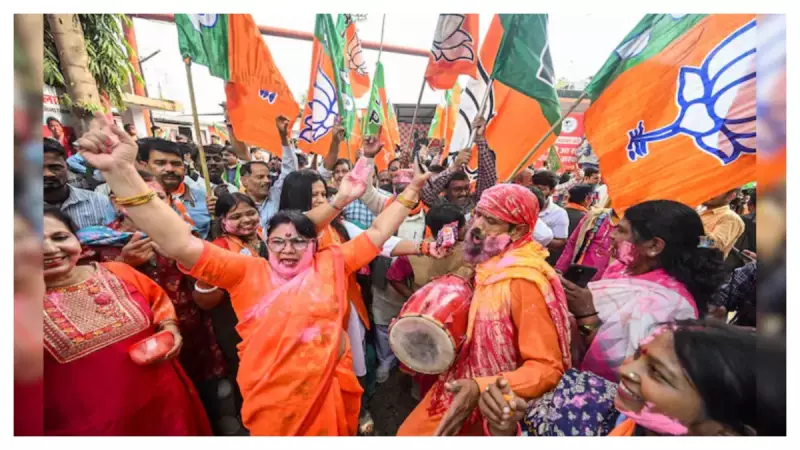
The recently concluded Bihar Assembly Elections for 2025 have painted a dramatically different political picture compared to the 2020 polls. The electoral battlefield has witnessed significant shifts in fortune for the major political players, reshaping the state's power dynamics. While the National Democratic Alliance (NDA) has managed to secure a majority, its composition and the performance of its constituents tell a story of strategic gains and surprising losses.
The Mahagathbandhan, or Grand Alliance, led by the Rashtriya Janata Dal (RJD), has also experienced a reshuffle in its seat tally, with some partners strengthening their position and others facing a setback. This detailed analysis breaks down the seat-by-seat performance, comparing the 2025 results directly with the outcome of the 2020 elections to provide a clear picture of the political churn in Bihar.
NDA's Performance: A Tale of Contrasting Fortunes
The Bharatiya Janata Party (BJP) has emerged as the biggest gainer within the NDA coalition. Compared to its 2020 tally, the party has added a significant number of seats to its kitty, solidifying its position as the dominant force in the ruling alliance. This performance underscores the party's successful electoral strategy and its growing influence in the state's political landscape.
In a contrasting development, the Janata Dal (United) or JD(U), led by Chief Minister Nitish Kumar, has witnessed a dip in its numbers. The party has lost several seats compared to its 2020 performance. This decline marks a crucial shift in the internal balance of power within the NDA, with the BJP now holding more seats than its senior partner.
The other NDA allies, including Hindustani Awam Morcha (HAM) and Vikassheel Insaan Party (VIP), have also faced challenges. Both parties have seen a reduction in their seat share from the previous election, failing to make a significant impact in the 2025 polls. This consolidation of seats towards the BJP indicates a changing voter preference within the NDA's support base.
Mahagathbandhan's Mixed Bag of Results
The opposition Mahagathbandhan, spearheaded by the RJD, has had a mixed electoral outcome. The Rashtriya Janata Dal itself has managed to hold its ground, registering a slight improvement in its seat count compared to 2020. Tejashwi Yadav's leadership continues to resonate with a substantial portion of the electorate, allowing the party to remain the principal opposition force.
The Indian National Congress, a key constituent of the grand alliance, has faced a disappointing performance. The party's seat tally has decreased from its 2020 numbers, failing to capitalize on the anti-incumbency wave it had hoped for. This result raises questions about the party's strategy and its connection with the Bihar voter.
The Left parties, which were part of the Mahagathbandhan, have managed to retain their presence in the assembly. Their seat share has remained relatively stable, showing resilience in their traditional strongholds despite the larger national and state-level political currents.
Analysis of the Political Shift and Future Implications
The overall results point towards a fragmented mandate where the NDA has returned to power, but with a reconfigured internal hierarchy. The BJP's expanded footprint gives it greater leverage within the coalition, potentially influencing future policy decisions and governance models in the state.
The performance of the Mahagathbandhan suggests that while there is an appetite for opposition, it lacks a cohesive and unified narrative to decisively challenge the incumbent alliance. The Congress party's poor showing is a particular area of concern for the opposition bloc, as it weakens the collective strength needed to mount an effective challenge.
These results, finalized on the 13th of November, 2025, set the stage for the next chapter in Bihar's politics. The seat gains and losses will inevitably lead to post-election analyses, strategic rethinking, and possible realignments as parties prepare for the next electoral battle. The voter has spoken, and the message is one of change within continuity, rewarding some and penalizing others for their political actions over the last five years.





